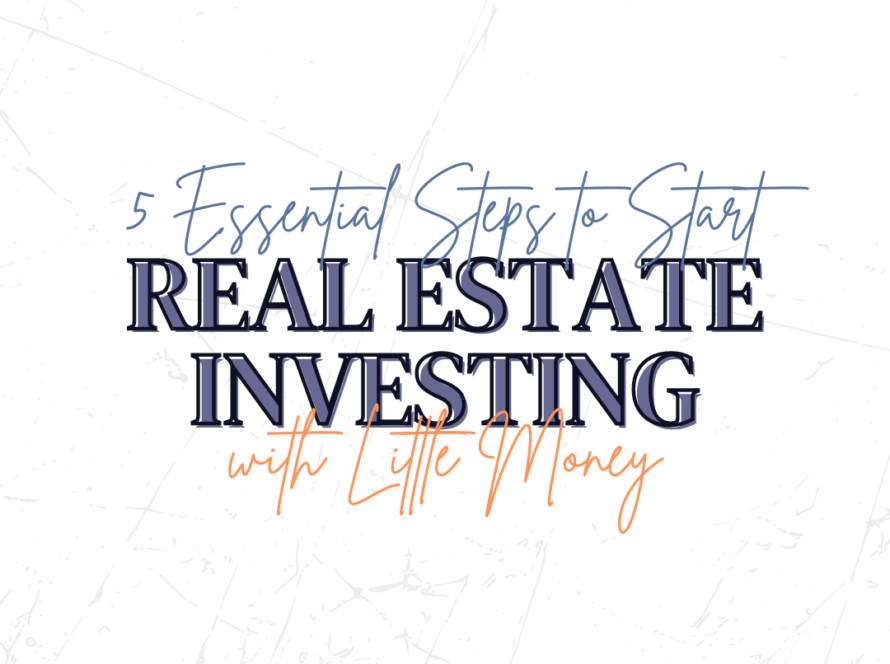Real estate has long been recognized as one of the most reliable paths to building long-term wealth. However, success in real estate investing doesn’t happen by chance. It requires a well-thought-out approach and the implementation of proven real estate investment strategies. In this comprehensive guide, we’ll explore seven time-tested strategies that have helped countless investors build substantial wealth through real estate. We’ll also delve into the world of passive real estate investing and discuss how to create a robust real estate investing business plan.
Why Real Estate Investment Strategies Matter
Before we dive into specific strategies, it’s crucial to understand why having a clear strategy is so important in real estate investing:
- Focus: A defined strategy helps you focus your efforts and resources on specific types of properties or investment methods.
- Risk Management: Different strategies have varying levels of risk. Choosing the right strategy can help you manage your risk tolerance.
- Scalability: Some strategies are more scalable than others, allowing you to grow your portfolio more efficiently.
- Expertise Development: By focusing on a particular strategy, you can develop deep expertise in that area.
- Goal Alignment: Your chosen strategy should align with your financial goals, whether that’s generating passive income, building long-term wealth, or both.
Now, let’s explore seven proven real estate investment strategies that can help you build long-term wealth.
Strategy 1: Buy and Hold Residential Real Estate
Buy and hold is a classic real estate investment strategy that involves purchasing residential properties and holding them for an extended period, typically while renting them out to tenants.
Key Benefits:
- Steady cash flow from rental income
- Property appreciation over time
- Tax benefits through depreciation and mortgage interest deductions
How to Implement:
- Research local real estate markets to find areas with strong rental demand and potential for appreciation.
- Calculate potential cash flow using the 1% rule (monthly rent should be at least 1% of the purchase price).
- Secure financing, considering options like conventional mortgages or FHA loans for multi-unit properties.
- Purchase properties that meet your criteria and are in good condition or require minimal repairs.
- Implement effective property management, either personally or through a professional management company.
Considerations:
- Requires active management unless you hire a property manager
- Potential for problem tenants or vacancies
- Ongoing maintenance and repair costs
Buy and hold can be an excellent strategy for building long-term wealth, as it combines steady cash flow with potential appreciation.
Strategy 2: Real Estate Investment Trusts (REITs)
REITs offer a way to invest in real estate without directly owning or managing properties. This strategy is particularly suited for those interested in passive real estate investing.
Key Benefits:
- High liquidity compared to physical real estate
- Professional management
- Diversification across multiple properties and even real estate sectors
- Potential for steady dividend income
How to Implement:
- Research different types of REITs (equity REITs, mortgage REITs, hybrid REITs).
- Choose between publicly traded REITs, public non-traded REITs, or private REITs.
- Evaluate REITs based on their track record, dividend yield, and growth potential.
- Invest through a brokerage account, either in individual REITs or REIT mutual funds/ETFs.
Considerations:
- Less control over investment decisions
- Potential for lower overall returns compared to direct property ownership
- Dividends are typically taxed as ordinary income
REITs can be an excellent addition to a diversified investment portfolio, offering real estate exposure without the hassles of property management.
Strategy 3: Fix and Flip
Fix and flip involves purchasing undervalued properties, renovating them, and selling them for a profit. This strategy can provide substantial returns but requires more active involvement and expertise.
Key Benefits:
- Potential for high returns in a relatively short time frame
- Opportunity to add significant value through renovations
- Develops skills in property evaluation and project management
How to Implement:
- Develop a network of real estate agents, contractors, and lenders.
- Research local markets to identify neighborhoods with potential for appreciation.
- Learn to accurately estimate renovation costs and after-repair value (ARV).
- Secure financing, often through hard money loans or private lenders.
- Purchase properties, oversee renovations, and sell quickly to minimize holding costs.
Considerations:
- Requires significant time, expertise, and often physical labor
- Higher risk due to potential for unexpected renovation costs or market changes
- Profits are typically taxed as ordinary income rather than capital gains
While fix and flip can be lucrative, it’s more of a active business than a passive investment strategy.
Strategy 4: Real Estate Wholesaling
Wholesaling involves finding undervalued properties and contracting them to sell to other investors at a higher price, without actually purchasing the property yourself.
Key Benefits:
- Potential for profits without needing significant capital
- No long-term commitment to properties
- Opportunity to learn the market and build a network of investors
How to Implement:
- Develop a strong understanding of your local real estate market.
- Build a network of potential buyers (often fix and flip investors or landlords).
- Learn to identify and evaluate undervalued properties.
- Master the art of negotiation to secure properties under contract.
- Quickly find buyers willing to pay more than your contracted price.
Considerations:
- Requires strong sales and networking skills
- Income can be inconsistent
- Legal complexities in some jurisdictions regarding wholesaling practices
Wholesaling can be a good way to get started in real estate investing with minimal capital, but it’s not typically a strategy for passive income or long-term wealth building.
Strategy 5: Commercial Real Estate Investing
Commercial real estate investing involves purchasing properties used for business purposes, such as office buildings, retail spaces, or warehouses.
Key Benefits:
- Potential for higher returns compared to residential real estate
- Longer lease terms, often with built-in rent escalations
- Triple net leases where tenants cover property expenses
How to Implement:
- Educate yourself on different types of commercial properties and their unique characteristics.
- Develop relationships with commercial real estate brokers and lenders.
- Analyze potential investments using metrics like cap rate, NOI, and cash-on-cash return.
- Consider starting with smaller commercial properties or partnering with experienced investors.
- Implement professional property management to handle the complexities of commercial leases and maintenance.
Considerations:
- Typically requires more capital than residential investments
- More complex leases and tenant requirements
- Potentially longer vacancy periods between tenants
Commercial real estate can be an excellent strategy for building significant wealth, but it often requires more expertise and capital than residential investing. How to Get a Commercial Real Estate Loan: A Guide
Strategy 6: Real Estate Syndication
Real estate syndication involves pooling capital from multiple investors to purchase larger properties that would be out of reach for most individual investors.
Key Benefits:
- Access to larger, potentially more profitable deals
- Passive investment opportunity
- Potential for both cash flow and appreciation
- Diversification across multiple large properties
How to Implement:
- Research different types of syndication deals (multifamily, self-storage, etc.).
- Connect with syndicators or sponsors who have a strong track record.
- Carefully review offering documents, including the private placement memorandum (PPM).
- Understand the fee structure and profit-sharing arrangement.
- Invest in deals that align with your investment goals and risk tolerance.
Considerations:
- Typically limited to accredited investors
- Less control over investment decisions
- Importance of thoroughly vetting the syndicator or sponsor
Real estate syndication can be an excellent way to passively invest in large-scale real estate projects.
Strategy 7: Short-Term Rentals
Short-term rentals, popularized by platforms like Airbnb and VRBO, involve renting out properties for brief periods, typically to vacationers or business travelers.
Key Benefits:
- Potential for higher rental income compared to long-term rentals
- Flexibility to use the property yourself when desired
- Opportunity to capitalize on seasonal demand in tourist areas
How to Implement:
- Research local regulations regarding short-term rentals.
- Identify areas with strong demand for short-term accommodations.
- Purchase properties in desirable locations or convert existing properties to short-term rentals.
- Furnish and equip the property for guest use.
- List the property on popular short-term rental platforms.
- Provide excellent guest experiences to maintain high occupancy rates.
Considerations:
- More active management required compared to long-term rentals
- Potential for increased wear and tear on the property
- Income can be seasonal or unpredictable
Short-term rentals can provide strong cash flow but often require more active management than traditional long-term rentals.
Creating a Real Estate Investing Business Plan
Regardless of which strategy or combination of strategies you choose, developing a real estate investing business plan is crucial for long-term success. Here’s how to create one:
- Define Your Goals: Clearly articulate your short-term and long-term financial goals.
- Choose Your Strategies: Based on your goals, risk tolerance, and available resources, select the strategies you plan to implement.
- Market Analysis: Research your target real estate markets, including trends, prices, and potential for growth.
- Financial Projections: Create detailed financial projections, including expected costs, revenues, and ROI for your chosen strategies.
- Funding Strategy: Outline how you plan to finance your investments, whether through personal savings, loans, or partnerships.
- Team Building: Identify the professionals you’ll need on your team, such as real estate agents, lawyers, accountants, and contractors.
- Risk Management: Develop a plan for mitigating potential risks, including market downturns, vacancies, or unexpected expenses.
- Exit Strategies: Define your exit strategies for each type of investment.
- Implementation Timeline: Create a timeline for implementing your strategies and achieving your goals.
- Performance Metrics: Establish key performance indicators (KPIs) to measure the success of your investments.
Passive Real Estate Investing Opportunities
For those interested in building wealth through real estate without the hands-on management typically associated with property ownership, there are several passive real estate investing options:
- REITs: As discussed earlier, REITs offer a hands-off way to invest in real estate.
- Real Estate Crowdfunding: Online platforms allow you to invest in specific real estate projects with relatively small amounts of capital.
- Private Equity Real Estate Funds: These funds pool investor capital to invest in a portfolio of properties, often focusing on a specific strategy or property type.
- Real Estate ETFs: These exchange-traded funds invest in a diversified portfolio of real estate-related stocks and REITs.
- Turnkey Rental Properties: While not entirely passive, turnkey properties are fully renovated and often come with property management in place.
- Real Estate Notes: Investing in mortgage notes allows you to act as the lender rather than the property owner.
When considering passive real estate investing, it’s important to thoroughly research the opportunities and understand the potential risks and returns.
Conclusion
Real estate investment strategies offer a variety of paths to building long-term wealth. Whether you prefer an active approach like fix and flip or buy and hold, or a more passive strategy like REITs or real estate syndication, there’s a real estate investment strategy to suit every investor’s goals and preferences.
The key to success lies in educating yourself, carefully selecting strategies that align with your goals and risk tolerance, and consistently implementing your chosen strategies over time. By developing a solid real estate investing business plan and staying informed about market trends and opportunities, you can leverage the power of real estate to build significant wealth over the long term.
Remember, successful real estate investing is not about get-rich-quick schemes, but rather about making informed decisions, managing risks, and patiently allowing your investments to grow over time. With the right strategies and a commitment to ongoing learning and adaptation, real estate can be a powerful vehicle for achieving your long-term financial goals.
What real estate investment strategies are you most interested in exploring? How do you plan to incorporate these strategies into your wealth-building journey? Share your thoughts and experiences in the comments below!




